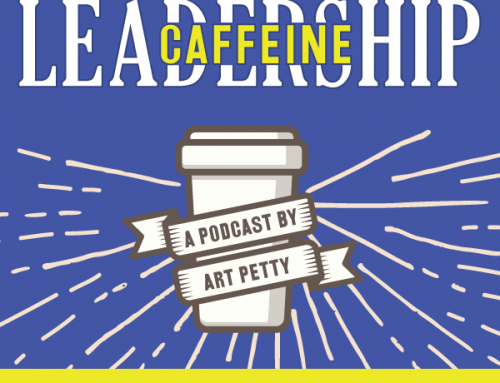 In prior posts…one in particular entitled, “Marketers, Are Trade Shows Extinct Yet,” I raised the ire of a fair number of marketers for expressing my belief in the demise of this ancient marketing tactic.
In prior posts…one in particular entitled, “Marketers, Are Trade Shows Extinct Yet,” I raised the ire of a fair number of marketers for expressing my belief in the demise of this ancient marketing tactic.
After many lengthy discussions, a good friend and great marketer said it best. “You’re not necessarily writing off event marketing, you’re just down on how most companies and marketers approach event and trade show marketing.”
That’s a fair assessment. My slight clarification is…”If you absolutely have to engage in event and trade show marketing, it better be one focused tactic in a portfolio of activities, and you better execute it flawlessly.” Especially given the budgetary pressures that every firm is under in this economy.
I do find it increasingly ridiculous to spend precious budget dollars to rent space for a few days in the hope that someone that might need something that you have will trip across your booth and strike up a conversation that leads to a relationship and a sale.
While it’s not impossible that lightening will strike…just like someone somewhere wins the lottery. I just hate to count on winning the lottery to pay the bills.
Like the million plus airline miles I’ve piled up thus far in my career, I’ve invested more than a few thousand hours of my life working and walking show floors. As a young professional, I worked for the Trade Show equivalent of the Soup Nazi on Seinfeld.
I now walk floors (as infrequently as possible) with a critic’s eye. I generally don’t like what I see and hear.
Common Catastrophes in Trade Show Marketing:
- Unintelligible signage. What do you do?
- Poorly trained booth representatives. It’s like looking for computer advice at Circuit City. No one knows what they are talking about.
- Groups of the poorly trained reps huddling with each other and ignoring interested passers by.
- Company participants that view shows as an all expense paid trip.
- Companies that fail to leverage shows for media and analyst work.
- Firms that show up, rent space and don’t have a presence in the programs and experts in sessions and on panels.
- Too many booth reps.
- Too few booth reps.
- Reps that don’t operate with an understanding of key qualifying questions.
- Staffing the booth with junior associates because senior people need to be free to roam the floor.
- Hired help that looks nice but has no connection with the firm. (That’s a euphemism.)
Back at corporate, I frequently evaluate marketing practices and systems, and the event experience continues to break down here.
Corporate Mismanagement of Trade Show Marketing:
- Most marketing teams don’t know what an event is worth to them. Few have the data that they should have to justify investing in an event year after year.
- Event selection and budgeting happens by…”We always attend this show,” and “So and so wanted to experiment with this one.”
- The pre-event planning generally does not include important things like inviting and meeting with customers, integrating analyst and editor briefings, targeting key audiences likely to attend, leveraging pre-event tactics like webinars, e-newsletters and blog posts to create interest in the event.
- Leads are managed like the Roach Motel. They go into the system, but they don’t come out.
- Message maps are not developed for the floor staff scheduled to work the show.
I’ll stop here, because I can keep building these lists of execution failures.
My erstwhile colleague encouraged me to quit complaining and offers some tools to help marketers begin building improved execution practices into their event and trade show programs.
I took the challenge and crafted “The Management Excellence Guide to Trade Show Marketing in a Recession,” and am offering this as a free download in this post and on the main page at this blog.
Click here to download: Guide to Trade Show Marketing in a Recession
The guide is by no means exhaustive, but it does offer some practices and suggestions that if implemented, will improve any firm’s execution and results from trade show marketing. If you have your own suggestions to offer, feel free to add them here in the comments section. I promise I will revise the Guide and incorporate your ideas with attribution and republish it as Version 2. Let’s write the Best Practices in Trade Show Marketing together.
The Bottom-Line for Now:
If you absolutely, positively believe you need trade shows as part of your marketing program, it’s time to improve your execution, your efficiency and your effectiveness. I’ll be all too happy to hear about your successes and innovations as you breathe life into this truly ancient and often mismanaged tactic.




Great points,
Whatever your team chooses to do should be done very well with a specific goal in mind, verse what I hear far too often as to why attend a show; “because we have always attended” or my favorite is “we would be conspicuously absent if we do not attend.” Really? Where? In the bar?
Here is what disturbs me. I have served many industries over the last 24 years and I have yet to attend a trade show in search of solutions to problems my organization is having. So if I do not go to shows looking for someone to solve my problems, why would I assume my customers will be looking for perfect solutions to their problems at trade shows?
Ask yourself, if you have a problem, an unresolved need, what do you do? I asked CEO’s on Linked in and their answers were; call my network for advice, and Google it. Not one said attend trade shows looking for solutions.
More important, stay close to your market, and ask them how they buy. If trade shows play a key role in the buying process then by all means keep attending. But make sure and ASK.
With budgets what they are, how many of your clients or targeted new clients plan on attending? In a number of industries clients are cutting back on travel. Nothing is worst than spending the funds to support the booth, employees expenses, as well as draw marketing and being able to roll a bowling ball down the aisles.
My last thought is to ask yourself; what is the opportunity cost of having your best and brightest making small talk with the team working the booth next to you verse working in their market?